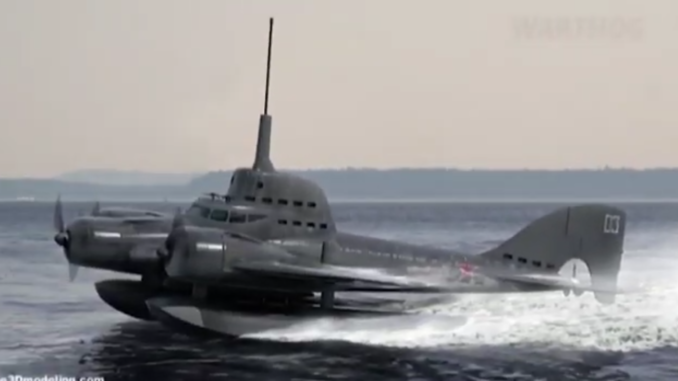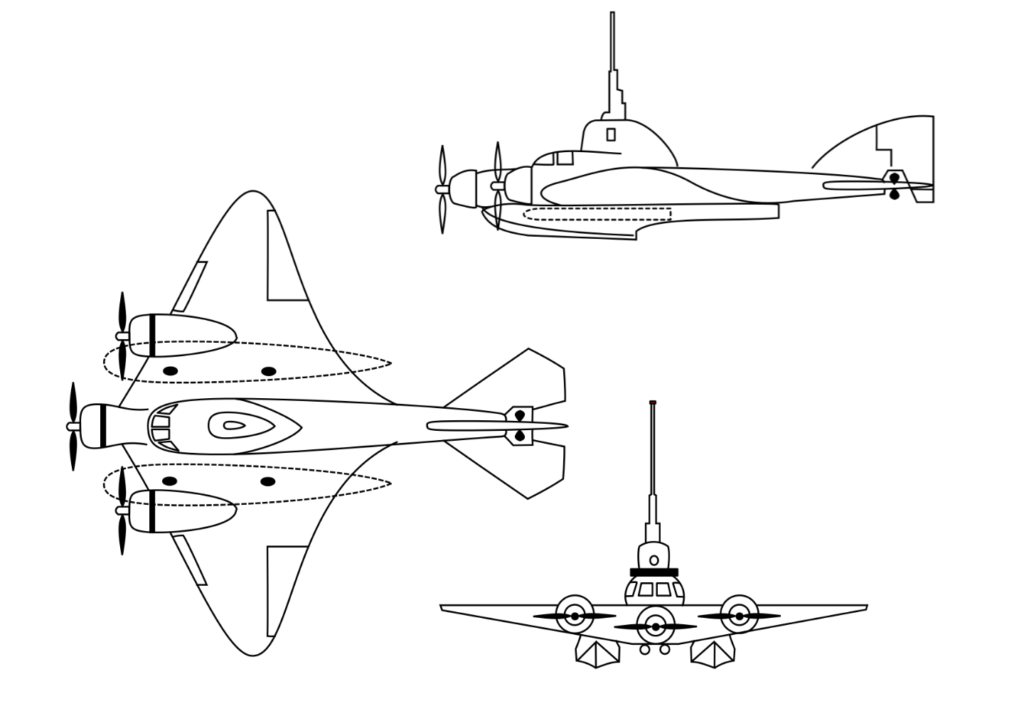
The flying submarine is an idea from the more obscure annals of history. In works of fiction, the idea dates from at least as early as 1904 with Jules Verne’s Master of the World, and in 1912 with The Flying Submarine by Percy F. Westerman, followed by many other incarnations since then in popular culture.
It wasn’t long before governments started to consider building a few flying subs of their very own. There were discussions, according to a 1920 British trade journal, among and between government officials, military officers, and a prominent aircraft maker over the idea. Alas, it seems that it was all just talk.
In 1934, Boris Petrovich Ushakov presented an idea to Soviet authorities for an seaplane that could take off and land on water, but also submerse and operate like a submarine with the capability of carrying two torpedoes which could sink a warship. Ushakov was said to be, according to various sources, a cadet at the Soviet Naval Academy or a student at the Dzerzhinsky Naval Engineers Academy in Leningrad (Saint Petersburg). No matter. Soviet authorities were looking for radical ideas, and liked this one.

In order to submerge, almost every empty space inside the aircraft would be opened to let sea water flood in, including the floats, wings, fuselage, and cockpit. The only compartment not flooded was directly behind the cockpit. Like a real submarine’s conning tower complete with periscope, this is where the three-man crew would operate the craft from when submerged. Electric pumps would push water out of the sub (boat? plane?) when the crew wanted to surface before takeoff. The design underwent several revisions over the years from 1934 on, but the project was suspended in 1939, likely because of the cost, complexity, and technical issues. In 1943, Ushakov’s flying submarine came back in fashion at the Kremlin, but fell out of favor again after Stalin’s death and was cancelled permanently by Khrushchev, circa 1953.
In the West, an American engineer named Donald Reid, who worked for North American Aviation, had the unusual hobby of building remote-controlled (R/C) submarines. In 1954, the idea of an R/C flying submarine struck him. One thing led to another, and after successfully building model R/C flying submarines, he decided to go one better and build a real flying submarine. Because he was an aircraft engineer, he had access to lots of parts from crashed experimental airplanes. Basically, he put together a Frankenstein machine with parts from several different aircraft. By sometime around 1964, the RFS-1 (Reid Flying Submarine) actually worked, although it could only fly short distances described as “hops”. Another drawback was that it took some time for the pilot to prepare it for diving. You couldn’t just set it down on the water and immediately submerge. For starters, the propeller had to be removed and the engine had to be enclosed in a rubber “diving bell”. The main problem with the RFS-1 was the same problem with all flying submarine designs: it was too heavy to fly, and too slow underwater to be practical.
Nevertheless, the Navy showed tentative interest in Reid’s RFS-1, likely because they were already working with Convair, another defense contractor, to build a flying submarine. The Convair “subplane” project was cancelled in 1966.
In 2008, the Defense Advanced Research Projects Agency (DARPA) with their (then) $3 billion budget, put out a call for proposals for a stealthy aircraft that could land on the water and then operate as a submarine. (That idea sounds somewhat familiar.) No recent word on the status of that project is readily available.
Fortunately, all of the fictional flying submarines in popular culture worked extremely well on-screen and in-print.
Question of the Night: What, in your opinion, was one of the world’s less useful ideas?
